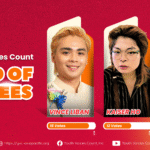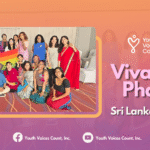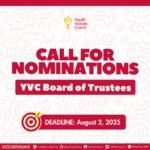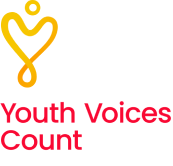The experience of being queer and dealing with societal issues and norms is one that almost every queer person will have to go through in their lives. It shapes their way of thinking and how they will continue to perceive the world and themselves in the present as well in the long run. While some of these issues will overlap with each other, individuals that grow up in Asian countries face intersectional barriers that conflict within patriarchy, sexism, race, religion, gender identity and sexual orientation and so on. No problem is similar to another and yet they all result in the same compartmentalizations of affecting the growth, development, and the mental state of every queer person.
From a young age, we grow up with a distinct heteronormative programming in our minds that a person born with a specific set of genitals needs to end up with a person of the opposite genitals in order to procreate and live a socially acceptable life. The understanding that normalcy equals procreation is flawed, since it could very well be applied to couples who cannot have or do not want to have children. This “normalcy” is most often a colonial mindset that has been fed into us and has made us blind to our original cultures and values of diverse identities, sexual orientations, and lifestyles. The colonized nation places itself in opposition to the homosexual body and any act that contradicts the national need for reproduction will be labeled as vile or inappropriate.
In the book Portuguese Encounters with Sri Lanka and the Maldives: Translated Texts from the Age of the Discoveries by Chandra de Silva, the author speaks of the views of the Portuguese settlers in 1547 in Sri Lanka where they say that, “The sin of sodomy is so prevalent in this kingdom of Kotte that it almost frightens us to live here. If one of the prominent men of the kingdom is reproached for not being ashamed of such an ugly vice, he replies that they do everything that they see their king doing, for this is their custom”. These notions and views have resulted in the criminalization of homosexuality based on acts of “gross indecency” in some Asian countries.
In India, the transgender identity also has a long history. Known as the Hijra, this community can trace their origins to antiquity. They also have a religious significance as they dedicate themselves to the Goddess Bahuchara Mata. Meanwhile Goddess Renuka, worshipped predominantly in South India, is believed to have the power to change the sex of individuals. The Hijra have also developed their own language known as Hijra Farsi. This proves the rich cultural heritage this community has in the Indian subcontinent.
Therefore we need to be aware of our internalizations, biases, and the origin of most of our so-called ‘normal’ values and morals. Decolonizing our society is one that needs to be done with precision and self-awareness while reflecting on what should and should not be upheld just because it has a say within the law. The law in itself is made by people with power, the same way as the histories of our countries. The critique and intellectual analysis of our behavior, laws, morals, and societal values need to be viewed through a lens of humanity and decolonization.
Life in a non cis, heterosexual context comes with its own ups, downs, and twists. Within our own communities, we have learnt to find acceptance, love, and closure, sometimes through chosen families. We have learnt that there are people along the way that will help us embrace who we are and love us as we do. But this is not to say that there is no divide within the queer community or that heteronormative values don’t seep into it either.
As heteronormativity is so ingrained within our minds, we forget or find it difficult to unlearn certain nuances. We tend to judge queer people if they do not act or look queer sometimes. But what exactly does acting or looking queer mean? To be accepted within an already marginalized community, does one need to change their personality or certain aspects of it in order to be deemed queer enough? Hence is there a qualitative standard for being queer? These are some of the questions that most people in the community deal with in one way or another. Does being gay mean that you need to dress in a particular way? Does it mean that your outlook needs to conform to a certain sexual lifestyle or preference? Or, if you are gay and too outwardly flamboyant, does this mean that you’re “too gay”? With the presence of a queer community, there also comes expectations as people try to label themselves and others. It must be understood that a label cannot define queer individuals or ideals because a label cannot contain or cohesively explain what it means to be queer as a whole. It cannot define one’s likes, dislikes, talents, personalities, attitudes and a million more other factors into one word. Individuals, queer or not, are whole complex human beings who just happen to be a part of, and may have, a diverse spectrum of sexualities, indentities, and conformities.
Even in the midst of these slivers of chaos, one of the most wholesome things within the queer community is the aspect of a chosen family. The belief that family is who accepts you and loves you and is not necessarily who you’re born with and into. Family is who you find and connect with along your journey and helps you overcome your hurdles and barriers. This love and affection in found families can be overwhelmingly complete.
However, this is also not to say that issues like biphobia and transphobia are not prevalent within the queer community. Queer women have less visibility in comparison to others due to the double marginalization by the patriarchy within their communities. Bisexual individuals are often invalidated if they date someone opposite their gender. They are asked to pick a side or to “not be so picky”. There is an internal fetishization of queer women and trans people that come from heteronormative values and they are often subjected to mistreatment or invalidation of their sexuality because of this. There is also the concept of lesbian relationships being viewed more as an aesthetic rather than an actual relationship. These notions could often be influenced by pornography and thus potrays how heteronormative society views queer women for their own pleasure rather than as individual with their own identities, thoughts, and needs.
There are definitely a lot of drawbacks within the aspect of being queer in an Asian society. These need to be addressed at a grassroots level but unfortunately within the everpresent fabric of remnants of colonization and whitewashing that one sees in the media and society, the progress of positive inclusivity and cohesion is very slow. Although younger generations are coming forward and expressing their views publicly with the aim to educate and empower more queer youth, our hope for a better and acceptable future lies in the collective efforts of all of us working towards this goal. It will help ensure a better future for us and for the future generation equally.







